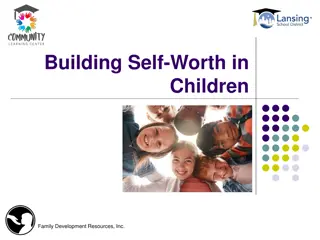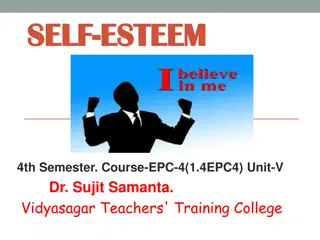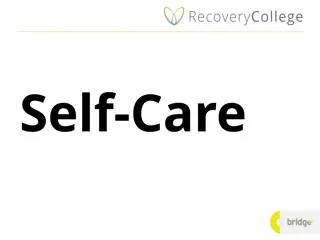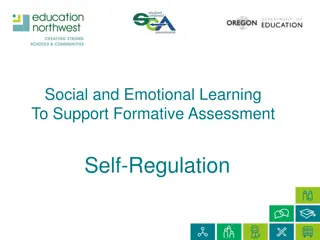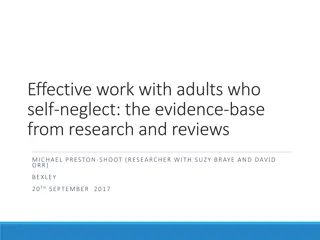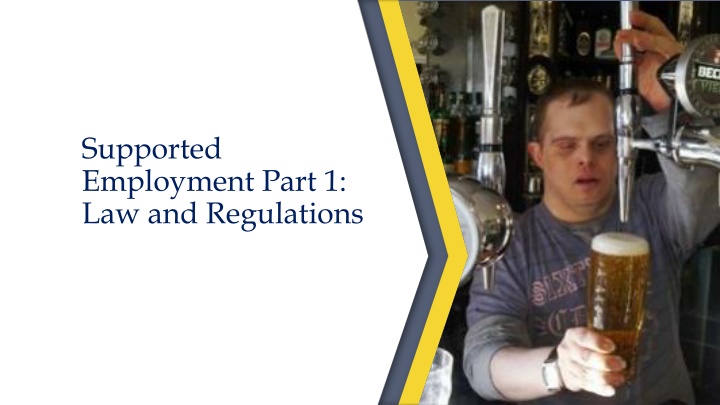
Supported Employment Laws and Regulations
Explore the key aspects of supported employment as defined in the WIOA Act of 2014 and related regulations. Learn about eligibility, definitions, funding guidelines, and more in this comprehensive overview. Discover how supported employment aims to assist individuals with significant disabilities in securing competitive, integrated jobs tailored to their strengths and interests.
Download Presentation

Please find below an Image/Link to download the presentation.
The content on the website is provided AS IS for your information and personal use only. It may not be sold, licensed, or shared on other websites without obtaining consent from the author. If you encounter any issues during the download, it is possible that the publisher has removed the file from their server.
You are allowed to download the files provided on this website for personal or commercial use, subject to the condition that they are used lawfully. All files are the property of their respective owners.
The content on the website is provided AS IS for your information and personal use only. It may not be sold, licensed, or shared on other websites without obtaining consent from the author.
E N D
Presentation Transcript
Supported Employment Part 1: Law and Regulations
Before you start These materials are intended to provide an overview of supported employment as defined in Title IV of the Workforce Innovation and Opportunity Act and related regulations, and as provided by State Vocational Rehabilitation agencies. Topics include eligibility, definitions, timelines, and funding guidelines. Self-employment (business development) and customized employment are included in this presentation as possible supported employment approaches. Not all individuals seeking self-employment or customized employment require supported employment services. Program development and policy issues are presented in Part 2 of this series.
WIOA and Supported Employment The Workforce Innovation and Opportunity Act of 2014 (WIOA) made some important changes in how Supported Employment services are provided. The underlying value remains the same: helping people with the most significant disabilities be successfully employed in competitive, integrated jobs.
What does the law say? (38) SUPPORTED EMPLOYMENT. The term supported employment means competitive integrated employment, including customized employment [or employment in an integrated work setting in which individuals are working on a short-term basis toward competitive integrated employment] that is individualized and customized consistent with the strengths, abilities, interests and informed choice of the individuals involved, for individuals with the most significant disabilities
WHO does Supported Employment serve? (A) (i) for whom competitive integrated employment has not historically occurred; or (ii) for whom competitive integrated employment has been interrupted or intermittent as a result of a significant disability; and (B) who, because of the nature and severity of their disability, need intensive supported employment services and extended services after the transition described in paragraph (13) (C), in order to perform the work involved.
Lets take a closer look -1 competitive integrated employment Competitive = jobs that are open to others in the community and pay at least minimum wage Integrated = working with individuals with and without disabilities, beyond those who are paid to provide services. This can include customized employment as well as typical jobs.
Lets take a closer look - 2 competitive integrated employment that is individualized and customized in other words consistent with the strengths, abilities, interests and informed choice of the individuals involved
For individuals with the most significant disabilities For whom competitive integrated employment has not historically occurred; or has been interrupted or intermittent as a result of a significant disability; and Who, because of the nature and severity of their disability, need intensive supported employment services and extended services
Its all about the individual need for support Not a specific diagnosis or condition! While we often think of supported employment as a service for people with intellectual/developmental disabilities, people with disabilities like mental illness or traumatic brain injury may also face job challenges for as long as they re working. Changes in job duties, supervisors or schedules, health or personal life, transportation, housing just about anything can upset the established balance and require ongoing support to maintain employment. To some degree, the need for SE is a judgment call. Some people obviously need it; others end up there after being unsuccessful trying independent employment.
Supported Employment Services - 1 Supported Employment (SE) Services include job coaching and other on- the-job supports needed to support and maintain individuals with disabilities, including youth with disabilities, so they can achieve competitive integrated employment.
Supported Employment Services - 2 Supported employment must be identified as the appropriate employment outcome based on a comprehensive assessment of rehabilitation needs and an evaluation of rehabilitation, career, and job needs. Supported employment program funds may only be used to provide supported employment services after the person has started working in an appropriate job not for assessment, discovery, job development, or job placement unless these activities occur after they ve started working General VR program allotment funds may also be used to provide supported employment services
Supported Employment Services Are Organized and made available, singly or in combination, in such a way as to assist an eligible individual to achieve competitive integrated employment; Based on a determination of the needs of an eligible individual, as specified in an individualized plan for employment; Provided by the designated State unit for a period of time not to exceed 24 months* unless under special circumstances the eligible individual and the rehabilitation counselor jointly agree to extend the time to achieve the employment outcome identified in the individualized plan for employment *Youth under age 25 with the most significant disabilities may be eligible for a longer service period; see Slide 27
Self Employment Self-employment, including Supported Self- employment, remains an important option under WIOA Self-employment can be considered competitive and integrated if it yields an income comparable to the income received by individuals Who are not individuals with disabilities Who are self-employed in similar occupations or on similar tasks Who have similar training, experience, and skills
Customized Employment (CE) Some Supported Employment participants may need Customized Employment (CE) in order to be successful. CE refers to competitive integrated employment for an individual with a significant disability, that: Is based on an individualized determination of the unique strengths, needs, and interests of the individual typically identified through an intensive process called Discovery that occurs prior to job placement; Meets the specific abilities of the individual and the business needs of the employer; and
Customized Employment (CE) Definition is carried out through flexible strategies such as job exploration by the individual, and working with an employer to facilitate placement, including - Customizing a job description based on current employer needs or on previously unidentified and unmet employer needs; Developing a set of job duties, a work schedule and job arrangement, and specifics of supervision (including performance evaluation and review), and determining a job location; Using a professional representative (generally a job coach/employment specialist) chosen by the individual, or if elected self-representation, to work with an employer to facilitate placement; and Providing services and supports at the job location.
One way to look at it SUPPORTED EMPLOYMENT SUPPORTED EMPLOYMENT is for people who can do an existing job with the right support and accommodations CUSTOMIZED EMPLOYMENT CUSTOMIZED EMPLOYMENT is for people who don t fit into existing job descriptions and need to have a job custom built or significantly changed to fit their unique strengths, conditions, needs and abilities, and potential contributions In both cases, the job must meet the competitive and integrated criteria, as well as meeting the needs of both the individual and the business.
Another way to look at it Supported Employment is like picking out the carpets and cabinets in a house you make minor modifications in an existing job based on your preferences and needs. Customized Employment is like sitting down with an architect and designing the house from scratch you are creating or modifying a job that benefits both the business and the employee. Michael Callahan (Marc Gold and Associates)
Typical Customized Employment may include Job creation: Either a new job description is negotiated based on current, unmet workplace needs, or some of the job tasks of incumbent workers are reassigned to the new employee. This reassignment allows the incumbent worker to focus on the critical functions of his/her job (i.e., primary job responsibilities) and complete more of the central work of the job. Job carving: An existing job description is modified containing one or more, but not all, of the tasks from the original job description. Job sharing: Two or more people share the tasks and responsibilities of a job based on each other's strengths.
Self-Employment as a form of Customized Employment Self Employment allows for an individual to receive assistance in the creation of an independently owned small business (typically a micro enterprise, under five employees) based on the strengths and dreams of an individual and the unmet needs of a local market while incorporating the individualized planning and support strategies needed for success.
Customized Employment Competencies Although WIOA requires that VR agencies support Customized Employment (CE) goals when appropriate, it does not prescribe a CE service process to achieve that outcome. However, there has been recent consensus on defining the essential and recommended elements of CE see WINTAC resources and strategies for competitive integrated employment resources.to access these and other CE resources. There are 5 competencies that have been identified as necessary to achieve Customized Employment: 1. Discovery (replaces typical vocational assessment; sometimes completed by the school or Developmental Disabilities agency prior to referral to VR) 2. Narrative or Visual Profile that captures the Discovery information 3. Customized Planning Meeting: Developing the employment plan 4. Development of a Representational Portfolio 5. Customized Job Development The Essential Elements of Customized Employment are described in more detail at WINTAC Resource - Essential Elements of-Customized Employment.
Typical Supported Employment Service Flow VR gets referral, determines eligibility, develops an IPE that identifies the need for SE services and a provider of extended services VRC and participant identify an appropriate provider of needed services External Community Rehabilitation Program (CRP) Internal VR staff job developer, placement specialist, job coach etc. Referral is made along with authorization for services Job development, job placement, job coaching/training services are provided and billed to the VRC along with progress reports. During this time, the VRC should remain actively involved in the case and oversee the services that are being provided.
Typical SE Service Flow Part 2 Once individual is stably employed, funding for services is transitioned to the extended services funding resource (typically Developmental Disabilities or Mental Health)* If the individual is stable on the job for at least 90 days after transitioning to the extended service provider, the VR program may close the case as successfully rehabilitated. *BUT REMEMBER VR may pay for the extended services for youth with the most significant disabilities for up to 4 years or until the individual turns 25
WIOA Change #1: Extending the Time Frame The maximum time frame for the provision of VR supported employment services was extended from 18 months to no longer than 24 months (unless under special circumstances the eligible individual and the rehabilitation counselor jointly agree to extend the time to achieve the employment outcome identified in the individualized plan for employment). (See Slide 27 to learn about how VR can cover supported employment services via extended services for youths beginning at age 14 and ending when they turn 25.) Remember that VR s SE services start AFTER the person starts working.
WIOA Change #2: Competitive Integrated Employment Supported employment is now required to be in competitive integrated employment Or employment in an integrated work setting in which the individual is working on a short term basis toward a competitive wage. Working in a non-integrated work setting doesn t qualify, no matter how high the wages are!
What is a short term basis? An individual with a most significant disability, whose supported employment in an integrated setting that does not satisfy the criterion of a competitive wage (e.g. subminimum wage employment) can be considered to be working on a short-term basis toward competitive integrated employment (CIE) as long as the individual can reasonably anticipate achieving a competitive wage (1) Within six months of achieving a supported employment outcome, defined as: a. Completion of up to 24 months (or longer) of SE services and b. At least 90 days of stability on the job following the transition to extended services; (2) In limited circumstances, the six month period can be extended up to as long as 12 months following the achievement of the supported employment outcome, if a longer period is necessary based on the needs of the individual, and the individual has demonstrated progress toward competitive earnings based on information contained in the service record.
Short-term basis applies only to actual jobs Unpaid internships, pre-apprenticeships, apprenticeships (including Registered Apprenticeships), and transitional employment are vocational rehabilitation services that lead to employment outcomes, but do not constitute supported employment outcomes within the meaning of the definition of supported employment in and would not be appropriate employment positions for a short-term basis.
WIOA Change #3: Extended Services for Youth WIOA requires VR agencies to use supported employment funds and/or VR program funds for providing extended services (ongoing supports) to youth with the most significant disabilities (MSD) if other resources are not available. Because only individuals with MSD qualify for SE services, this change impacts all youth in SE. Youth with a disability = at least 14 and not older than 24 Extended services begin after supported employment services have been completed (which can take up to 24 months or longer) VR funded extended services can be provided for up to four years or until the person reaches the age of 25
WIOA Change #4: 50% of SE Funds to Serve Youth with Most Significant Disabilities 50 percent of a State s allotment under the Supported Employment program must be used for the provision of supported employment services, including extended services, to youth with the most significant disabilities; This is a state level requirement; if there are two VR agencies in the state, they must coordinate on this requirement.
WIOA Fiscal Changes Relative to SE* WIOA requires at least a 10 percent match for the 50 percent of the allotment reserved to serve youth with the most significant disabilities. The previous law did not require a match on SE funds. WIOA reduces the amount of SE funds that may be spent on administrative costs to 2.5%. Previously it was 5%. *NOTE: If Supported Employment grant funds are not awarded by RSA, these two requirements will not apply
Who pays? The $64,000 question! How do we braid not blend available funding so that people get the support they need to get employed and stay employed? Let s look at the funding and service flow and how it changes across three stages: 1. Eligibility and Planning 2. Intensive Skills Training and Support 3. Extended Services
Braided Funding Most often, VR pays for services up front and other resources are used for extended support services as long as the person needs them. The source for these services should be identified as part of the IPE development. WIOA added a stipulation that for youth with a most significant disability, VR is allowed to pay for extended services (ongoing support) for up to four years or until the individual turns 25 and is no longer considered a youth.
Part 1: Eligibility and Planning What VR Does: Provides counseling and guidance, arranges for assessment, develops plan. Source for ongoing support should be identified as part of plan Payment: Paid for by VR General Program funds Service Partners: CRP might be involved in assessment to help plan development
Part 2: Intensive Skills Training and Support - 1 What VR Does: Oversees authorized services, tracks achievement of plan. Payment: Paid for by VR for up to 24 months (with possible extension as needed) or until stability is achieved. VR can pay out of SE funds as long as services are provided after the individual starts work Service Partners: Services usually provided by a CRP, MH Center, etc. Services typically provided on the job, but may be provided off-site (at the request of the individual) Duration: Time limited
Part 2: Intensive Skills Training and Support - 2 Services may include: Identify work goal and support needs Secure and stabilize competitive job Develop productivity acceptable to employer Support adjustment to workplace and culture Develop coworker and community supports (including natural supports)
Part 2: Intensive Skills Training and Support - 3 We know not everyone is going to need all these services. Some people may be able to find their own job; others may need lots and lots of help. Some people don t need much help adjusting to the workplace culture and developing relationships with others on the job, while in other cases there may need to be a lot of modeling, skill development, and educating others in the workplace WIOA states that this time period where VR is paying for services should not extend beyond 24 months except that period may be extended, if necessary, in order to achieve the employment outcome. This makes it very important for VR agencies to have clear agreements with other state agencies that typically fund the ongoing support following stability.
Indicators of stabilization and transition to extended services When intensive skills training and support are completed and the new employee is stable on the job, the VR counselor, participant, and CRP or VR placement staff should agree on a transition to extended services. Issues to consider include: Has the individual reached a maximum level of work performance in a competitive integrated employment setting? Has the agreed-upon hourly work goal been reached? Has job coaching and other follow along services decreased to a level necessary to maintain the individual in employment? Once the transition to extended services has taken place, the VR case starts moving toward a successful closure (usually after 90 more days of stable employment).
Part 3: Extended Services What VR Does: VR closes case (usually after 90 days of stability following transition to extended support services) Payment: Extended Services are usually paid for through Medicaid Waiver or state $$ by Developmental Disabilities or Mental Health. VR may pay for up to 4 years of Extended Services for a youth under age 25 with a most significant disability Service Partners: Services are usually provided by CRP, MH Center, etc. Sometimes natural supports, family supports or WRAP plans (Wrap Plan Description) can be used instead of paid services Duration: Generally not time limited when paid for by DD or MH; limited to four years or until age 25 when paid for by VR
Part 3: Extended Services are typically paid for by Medicaid waivers or state funds* The source of extended services needs to be included in the IPE by definition the person NEEDS long-term support, so where is it going to come from? Extended services may include: Helping the person stay employed through support, retraining, whatever else is needed Career advancement Supporting job changes if appropriate Changing support plan over time as needed * remember, VR SE funds can be used to pay for up to four years of Extended Services for youth under the age of 25 with the most significant disabilities!
VRs Role in Supported Employment is Completed When The person has received up to 24 months* of VR SE services (usually job placement, training, support), OR The person has transitioned to extended support services financed by another funding source**, AND The person has achieved stability for at least 90 days after transitioning to extended support services, AND The person is in a job that matches their strengths, abilities, interests, and informed choice *or maybe longer in individual situations that merit special extenuating circumstances ** or Extended Services financed by the VR agency for youth with MSD up to the age of 25

